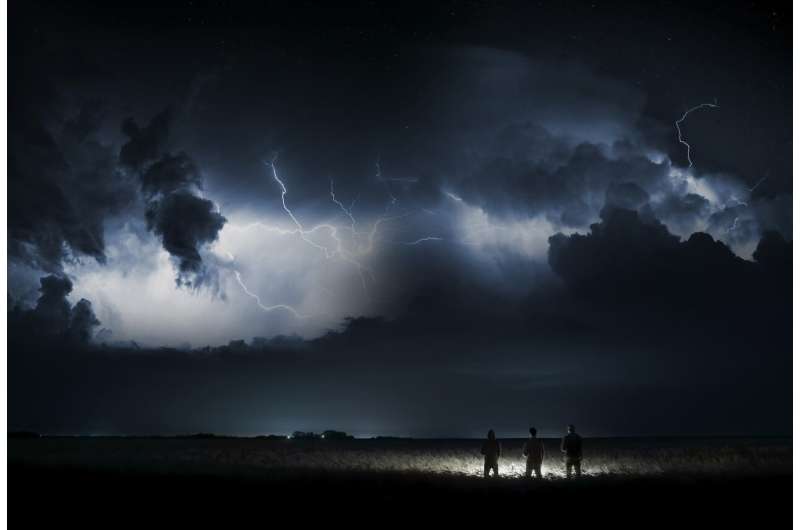A storm by any name: Sleepy hurricane season may wake up in September
by Jorge L. Ortiz

Danielle, Earl, and Fiona have been patiently waiting their turn. Now there are signs they may come alive, possibly disrupting Labor Day weekend.
The next three available names on this year’s list of tropical storms and hurricanes may not be used this month, which would mark only the third time since 1960 without a single named storm in August.
But increasing activity bubbling up in the Atlantic basin—which includes the ocean of that name, the Caribbean Sea, and the Gulf of Mexico—suggests this unusual pattern may be about to end as hurricane season approaches its apex in September.
Three systems to monitor
Weather forecasters are keeping tabs on three systems that could develop into storms as early as Wednesday—the final day of the month—and will have a better idea of whether one of them could impact the U.S. shortly after that.
The closest and most likely to affect the holiday weekend is a tropical wave in the far northwestern Caribbean, south of Cuba and east of the Yucatan Peninsula. Accuweather senior meteorologist Dan Pydynowski said it’s still too early to tell whether this will form into a tropical depression or something even bigger, which may hinge on whether it heads west toward Mexico or climbs north toward the Gulf and the southern U.S. states.
A named storm in August? ‘A close call’
A better possibility for becoming a named storm appears to be a disturbance in the central Atlantic about halfway between the west coast of Africa and the Caribbean, which is moving westward but remains disorganized. But it holds the potential to grow potent enough to receive a name by Wednesday, and it could turn toward Puerto Rico and the Virgin Islands later in the week.
“Will we get through the end of the day Wednesday (without a named storm)? It’s probably going to be a close call,” Pydynowski said.
Farther east in the Atlantic, a fairly strong tropical wave may emerge off the west coast of Africa in the next few days, and it could develop into a tropical depression if it keeps heading west. From that distance, it would take nearly two weeks to reach U.S. shores, if it ever does.
Action after an extended lull
This is much more action than weather scientists have observed in the Atlantic this month when strong wind shear and dry air across the central and eastern Atlantic have kept storms from forming. The ocean hasn’t produced any tropical systems since early July.
Experts warn that it’s premature to conclude the hurricane season—which runs from June through November and typically peaks in early to mid-September—will be mild this year.
In fact, the Accuweather forecast calls for 16 named storms this season, two above the average though five fewer than in 2021. The National Oceanic and Atmospheric Administration predicts 6 to 10 Atlantic hurricanes, compared to the norm of seven, and they can come quickly in September, when ocean water is at its warmest.
“You don’t want people to let their guard down. Just because we haven’t had any storms yet doesn’t mean we won’t,” Pydynowski said. “And it’s not necessarily the number of storms that counts. It’s, does the storm hit the U.S., and if it does, what is the intensity when it does so.”
The 2022 hurricane season is tracking behind the pace of those in 2020 and 2021, but it’s still early
(c)2022 USA Today
Distributed by Tribune Content Agency, LLC.
Citation:
A storm by any name: Sleepy hurricane season may wake up in September (2022, August 30)
retrieved 30 August 2022
from https://phys.org/news/2022-08-storm-sleepy-hurricane-season-september.html
This document is subject to copyright. Apart from any fair dealing for the purpose of private study or research, no
part may be reproduced without the written permission. The content is provided for information purposes only.
For all the latest Science News Click Here
For the latest news and updates, follow us on Google News.

